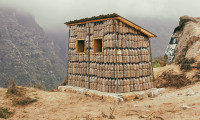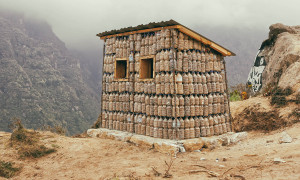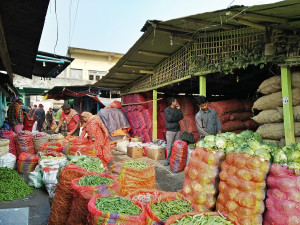Money
Funds inflow tops outflow for first time in 3 months
The flow of money into the economy has surpassed outflows for the first time in three months of the current fiscal year, as foreign direct investment posted a robust growth and remittance income went up moderately.
The flow of money into the economy has surpassed outflows for the first time in three months of the current fiscal year, as foreign direct investment posted a robust growth and remittance income went up moderately.
The balance of payments (BoP) had remained in negative territory for two consecutive months in between mid-July and mid-September. These deficits were the first in two years.
This trend was bucked in the third month of this fiscal year, as BoP returned to a surplus of Rs19.7 billion, shows the latest macroeconomic report of the Nepal Rastra Bank, the central bank. This means flow of money into the economy surpassed outflows by Rs19.7 billion in the first quarter of this fiscal year.
This surplus prompted the country’s foreign exchange reserve to grow by 1.7 percent to $9.9 billion (approximately Rs1,054.6 billion) as of mid-October. This foreign exchange holding is sufficient to cover merchandise imports of 14.6 months, and merchandise and services imports of 12.5 months, says the NRB report.
BoP rebounded to a surplus after real flow of foreign direct investment grew by over four times to Rs5 billion in the first quarter. In the same a year ago, Nepal had received Rs1.1 billion in foreign direct investment.
“Investors have become more optimistic following the end of over four-and-a-half-month-long blockade [imposed by India that choked supplies of almost everything from raw materials and petroleum products to daily essentials],” Maheshwor Neupane, director general of the Department of Industry, told the Post.
Also, a slew of reform measures taken by the government, such as promulgation of Industrial Enterprises Act, and initiative taken to make Foreign Investment and Technology Transfer Act, and Labour Act investor-friendly have helped in lifting business sentiment to some extent, according to Neupane. “But to make leapfrog in terms of attracting foreign investment, reforms are required in almost every sector.”
Although the foreign investment attracted by Nepal in the three-month period is a drop in the ocean compared to what neighbouring countries-China and India-are receiving, growth of 348.7 percent recorded in the first quarter is encouraging. And this was one of the factors that helped BoP to return to the positive territory.
Another reason that helped BoP to post a surplus was 3.2 percent growth in inflow of money sent by Nepalis working abroad. Remittance income stood at Rs171.8 billion in the three-month period, as against Rs166.4 billion in the same period a year ago.
Although the growth in remittance income was modest, it did provide much-needed relief, as flow of money sent by overseas Nepalis had shrunk by 2.5 percent in the first month of the current fiscal year, and many had taken this as harbinger of bad days for the remittance sector.
But possibility of remittance inflow tapering in the coming days cannot be ruled out, as the number of Nepalis leaving the country for employment purpose has fallen for the two consecutive fiscal years. The trend is the same in the first three months of the current fiscal year as well.
Fall in remittance income-which as a share of gross domestic product hovers around 30 percent-will not bode well for Nepal, as it will reduce consumption and ultimately hit the government’s revenue collection.
While modest growth in remittance income is being seen as a positive sign, it, however, could not stop the current account from slipping into negative territory. The current account posted a deficit of Rs2 billion in the three-month period, as the country imported more goods and services. The country’s trade deficit surged by 77.5 percent to Rs201.7 billion in the first three months, as import growth surpassed exports.
The country’s imports jumped 69.1 percent to Rs220.7 billion in the three-month period, while exports grew at a modest pace of 12.6 percent to Rs18.9 billion, shows the NRB report.
Also, services trade posted a deficit of Rs2.4 billion, as more money flowed out of the country to cover bills of Nepalis studying abroad and Nepali outbound travellers demanded more foreign currency.
Expenditure of Nepalis travelling abroad grew by 29.1 percent to Rs20.3 billion in the three-month period. Spending made by Nepalis abroad was almost double the income of Rs11.7 billion generated from foreign travellers who visited Nepal in the first three months of the current fiscal year.
Also, Rs8.7 billion was transferred abroad in the three-month period to cover fees and other expenses of Nepalis studying abroad-up 65.2 percent than in the same period a year ago. While these expenses rose, inflow of foreign grants tapered by 18.5 percent to Rs13.3 billion.




 13.12°C Kathmandu
13.12°C Kathmandu















